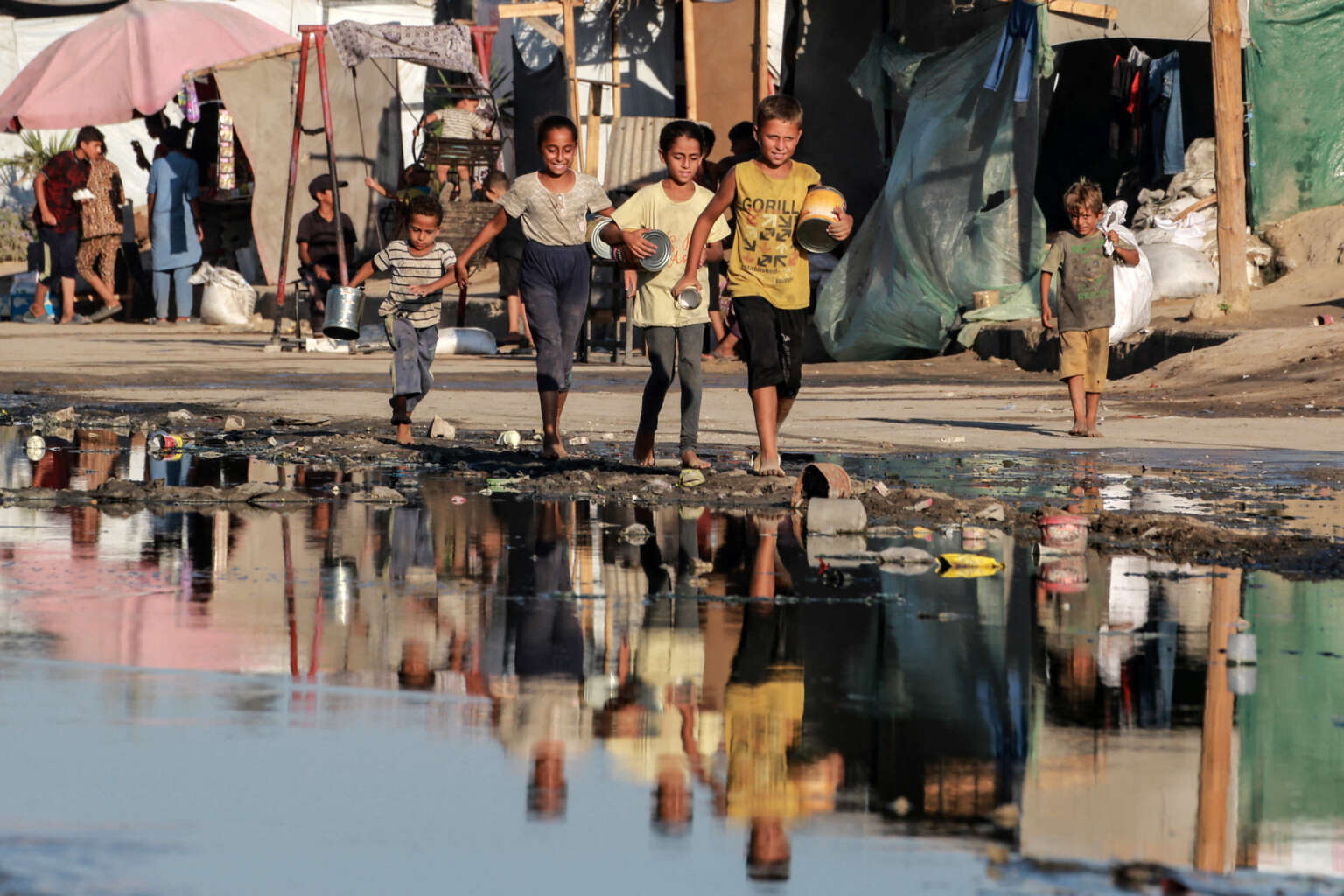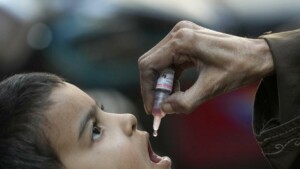We Communicate For Happy Children
 Gaza: Polio Response Measured in Hours - And Aid Organizations’ Operations Are Extremely Complex
Gaza: Polio Response Measured in Hours - And Aid Organizations’ Operations Are Extremely Complex 
Prepared by: The Media and Communication Department at the Arab Network of Early Childhood Network
6 September 2024
The work of international and local organizations is severely hampered by Israeli policies. Aid workers are still in the Israeli line of fire. Forced Israeli eviction orders from Deir al-Balah, the only area where the UN coordinates most of its operations, continue. Aid organizations are working in extremely difficult conditions. And despite the UN announcement about the success of the campaign’s first phase against polio, if the numbers targeted by the campaign fail to be reached in the coming phases, polio is on the verge of spreading.
With the first case of poliovirus type 2 (cVDPV2) recorded on 16 August this year, Gaza entered a more dangerous phase for children and those around them. This disease was added to a long list of conditions that are common among children, such as hepatitis A, meningitis, respiratory infections, diarrhea, and skin diseases of all kinds. The resurgence of this disease and its grave danger will set Gaza’s children back a quarter of a century when the last infection was recorded and undermine decades of hard work and routine vaccination campaigns that reached 99% coverage in 2022.
The case detected in a 10-month-old boy in Deir al-Balah is only one of hundreds of potential cases, as each confirmed case is matched by 200 undetected cases, increasing the likelihood of spread. To date, three polio cases have been reported, according to the World Health Organization (WHO). This came after the WHO and the Ministry of Health in Gaza announced on 19 July that the virus had been detected in six samples of wastewater collected by UNICEF from two locations in Khan Younis and Deir al-Balah.
Many reasons have accumulated to create a fertile ground for the re-spread of the virus:
Human Rights Watch has highlighted some of these causes, explaining that they “contribute to the potentially catastrophic outbreak of polio in Gaza”.

The polio vaccination campaign in Gaza is extremely complex. (Associated Press, AP)
The campaign was launched… But?
“Polio response is measured in hours. Unless Gaza’s children are vaccinated against polio, mass disability threatens”, says Save the Children. Based on these facts, international humanitarian organizations, in collaboration with local authorities and organizations, are trying to intensify efforts to prevent the spread of the disease. On 25 August, 1 million and 260 thousand doses of Type 2 vaccines arrived in the Gaza Strip, along with the necessary refrigeration equipment to preserve them.
After the Israeli occupation prevented the start of the polio vaccination campaign for weeks and refused to agree to a humanitarian truce to facilitate its access to Gaza’s children, the campaign was launched in its first phase in early September amid tremendous external pressure and will continue until 12 September. The campaign arrives at the Gaza governorate and the north on 9 September.
In an attempt to contain the pandemic, the Palestinian Ministry of Health (MoH), in collaboration with UNRWA, WHO, UNICEF and others, plans to vaccinate more than 640,000 children under the age of ten in two phases, the first of which began at the beginning of September. There are currently more than 200 teams involved in the campaign in central Gaza, and the Palestinian Ministry of Health announced that around 159,000 children had been vaccinated as of the second day of the campaign as the Israeli war continues.
Of the children targeted, about 50,000 were born in the past ten months. The vast majority of them have not received any vaccination from birth to prevent any disease due to the ongoing Israeli genocide, destruction of health infrastructures, and denial of all kinds of aid. Not to mention the hundreds of thousands of children who missed routine immunizations for the same reasons and who live in a state of repeated displacement amid tragic conditions that raise the risk of disease to the point of death.
However, the availability of the vaccine alone in Gaza is not enough, even if its conditions are fulfilled in terms of sufficient numbers and preservation mechanisms until the campaign is launched. The conditions under which humanitarian organizations are working are extremely complex and difficult. Medical teams are unable to reach some areas due to the presence of the Israeli army and continued shelling. Several obstacles hamper the realization of this plan, most notably:
According to the UN Office for the Coordination of Humanitarian Affairs (OCHA), between 19 and 24 August, the Israeli army issued the highest number of evacuation orders in a single week since the beginning of the crisis. The UN has resumed aid operations while aid workers have been under fire throughout the crisis, which it has described as “the deadliest ever for the UN”.
But what does this polio spread mean? And why is campaign failure considered a risk?
Polio is an infectious disease caused by a virus. The severity of the disease ranges from a latent infection to a paralyzing and potentially fatal disease when it affects vital muscles such as those responsible for breathing. The disease mainly affects children under five, but it can affect anyone who has not been previously vaccinated, regardless of age. One in 200 infections leads to paralysis, and between 5 and 10 per cent of those who are paralyzed die because their respiratory muscles stop working.
In the mid-20th century, the poliovirus paralyzed or killed more than half a million people annually and was one of the leading causes of paralysis in children around the world. With the discovery of vaccines, cases of disease caused by the poliovirus have declined by more than 99% since 1988.
However, over the past two decades, cases of poliovirus type 2 have emerged in some conflict zones around the world, most notably Yemen and Sudan. The danger of the disease is that it can cause complete paralysis in a matter of hours. Delayed vaccination, or failure to reach all target groups, causes the virus to be transmitted to more children. If vaccination is not allowed, “it could lead to mass disability of children”, Save the Children said, commenting on polio in Gaza. More seriously, if this disease turns into a large-scale epidemic, it will not be confined to a geographical area, but “children across borders will also be affected”, according to the organization.
The campaign has begun and the first phase is completed. Whether the campaign succeeds or fails depends on many factors. But the realization of either option without a permanent and immediate ceasefire will mean the remaining of Gaza’s children within the cycle of genocide and diseases.
